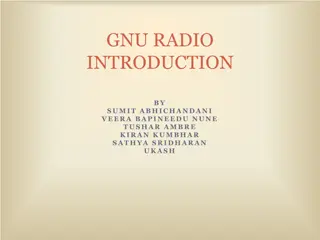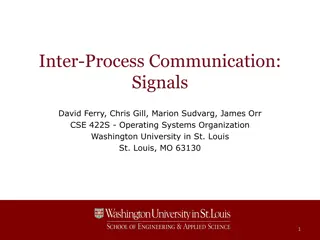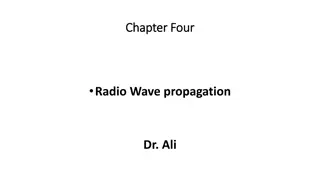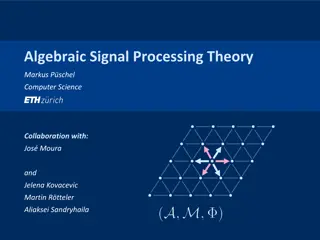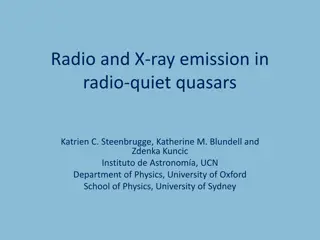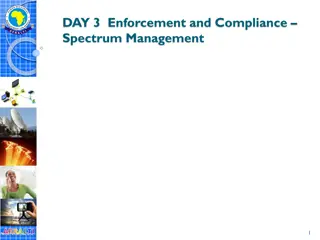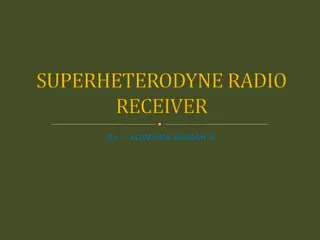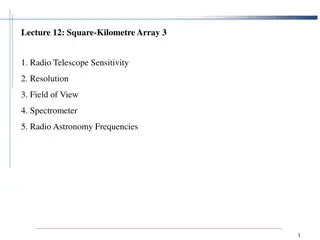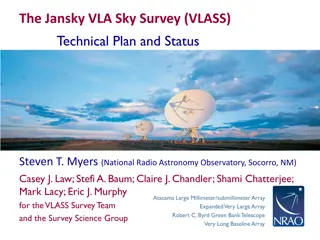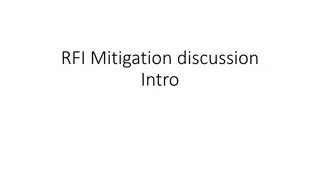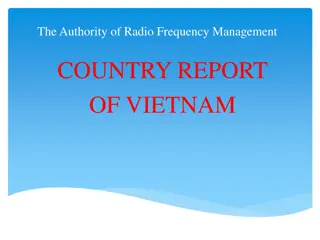
Understanding RF Signals and Power Measurement
Explore the concepts of RF signal propagation, frequency spectrum, channel spacing, phase, power measurement, and signal loss through informative images and explanations in the context of wireless communication. Learn about different frequency units, wavelength variations, power measurement units, and how dB is used to represent signal strength.
Download Presentation

Please find below an Image/Link to download the presentation.
The content on the website is provided AS IS for your information and personal use only. It may not be sold, licensed, or shared on other websites without obtaining consent from the author. If you encounter any issues during the download, it is possible that the publisher has removed the file from their server.
You are allowed to download the files provided on this website for personal or commercial use, subject to the condition that they are used lawfully. All files are the property of their respective owners.
The content on the website is provided AS IS for your information and personal use only. It may not be sold, licensed, or shared on other websites without obtaining consent from the author.
E N D
Presentation Transcript
UNIVERSITAS KOMPUTER INDONESIA Chap 5 RF Signal Dr. Yeffry Handoko Putra, M.T
Wave Propagation with an Idealistic Antenna.
Continuous Frequency Spectrum. 5.150 to 5.250 GHz 5.250 to 5.350 GHz 5.470 to 5.725 GHz 5.725 to 5.825 GHz 2.4 and 2.5 GHz
An Example of Channel Spacing in the 2.4-GHz Band. Signal Bandwidth
Examples of Channel Spacing and Overlap
Examples of Increasing Frequency and Decreasing Wavelength.
Understanding RF Power and dB The strength of an RF signal is usually measured by its power, in watts (W). For example, a typical AM radio station broadcasts at a power of 50,000 W; an FM radio station might use 16,000 W. In comparison, a wireless LAN transmitter usually has a signal strength between 0.1 W (100 mW) and 0.001 W (1 mW). Fact 1 A value of 0 dB means that the two absolute power values are equal. Fact 2 A value of 3 dB means that the power value of interest is double the reference value; a value of 3 dB means the power value of interest is half the reference.
An Example of RF Signal Power Loss. Subtracting dB to Represent a Loss in Signal Strength.
Effective Isotropic Radiated Power (EIRP) Suppose a transmitter is configured for a power level of 10 dBm (10 mW). A cable with 5-dB loss connects the transmitter to an antenna with an 8-dBi gain. The resulting EIRP of the system is 10 dBm 5 dB + 8 dBi, or 13 dBm. You might notice that the EIRP is made up of decibel-milliwatt (dBm), dB relative to an isotropic antenna (dBi), and decibel (dB) values
Calculating Received Signal Strength Over the Path of an RF Signal
An Example of Calculating Received Signal Strength The signal begins at 20 dBm at the transmitter, has an EIRP value of 22 dBm at the transmitting antenna (20 dBm 2 dB + 4 dBi), and arrives at the receiver with a level of 45 dBm.
Understanding Power Levels at the Receiver The noise level, or the average signal strength of the noise, is called the noise floor
An Example of a Changing Noise Floor and SNR.
Carrying Data Over an RF Signal Poor Attempts at Sending Data Over an RF Signal
FHSS An Example FHSS Channel-Hopping Sequence.
DSSS Example Nonoverlapping Channels Used for DSSS.
DSSS DSSS transmits data in a serial stream, where each data bit is prepared for transmission one at a time. It might seem like a simple matter to transmit the data bits in the order that they are stored or presented to the wireless transmitter; however, RF signals are often affected by external factors like noise or interference that can garble the data at the receiver. For that reason, a wireless transmitter performs several functions to make the data stream less susceptible to being degraded along the transmission path:
2-Mbps Data Rate Because DQPSK can modulate data bits in pairs, it is able to transmit twice the data rate of DBPSK, or 2 Mbps.
Example Phase Changes During DBPSK and DQPSK Modulation.
OFDM Operation with 48 Parallel Subcarriers
Examples of Phase and Amplitude Changes with 16-QAM.

